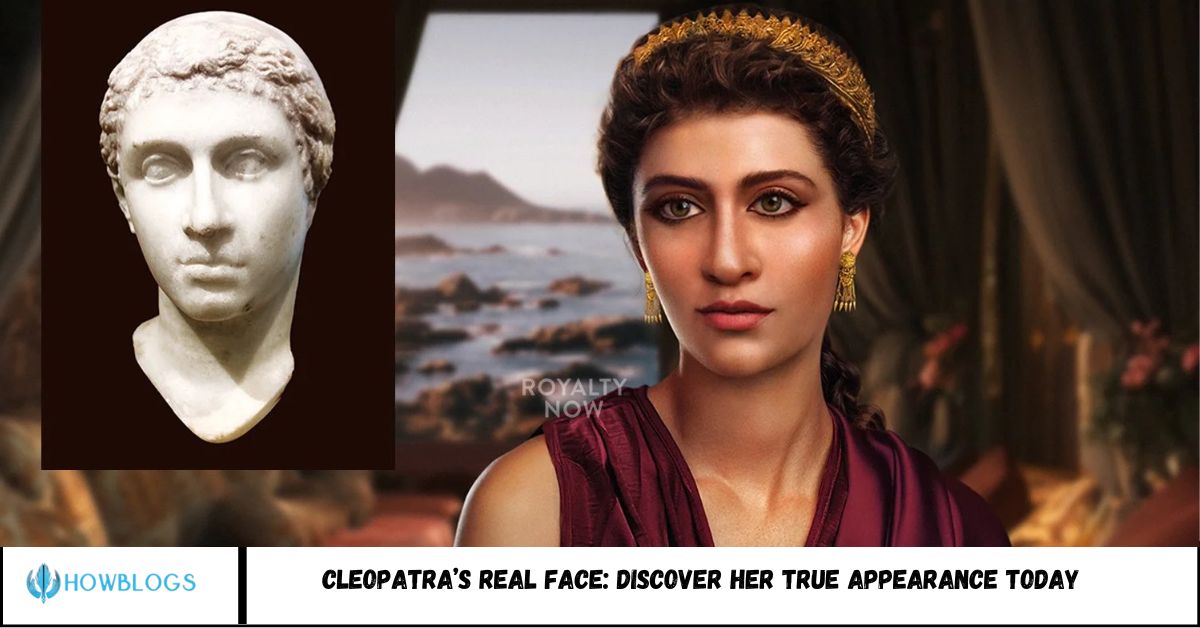Table of Contents
What Did Cleopatra’s Real Face Look Like? Real History Revealed
“Was Cleopatra truly the legendary beauty we’ve imagined—or has history painted a different picture?”
For centuries, Cleopatra VII, the last active ruler of the Ptolemaic Kingdom of Egypt, has captivated imaginations. Thanks to Hollywood, art, and literature, she’s often portrayed as the epitome of beauty and seduction. But how accurate are these portrayals? What did Cleopatra’s real face actually look like?
In this article, we’ll explore ancient evidence, modern reconstructions, and expert insights to uncover Cleopatra’s true appearance. From Roman coins to mummy portraits, we’ll examine what science and history reveal about her legendary looks.
What did Cleopatra really look like? Historians and archaeologists have studied ancient coins, statues, and contemporary writings to uncover the real face of Cleopatra. This article explores how her image has been shaped over time, what physical evidence tells us about her actual appearance, and how modern technology is helping to reconstruct her facial features accurately. Keywords: Cleopatra real face, Cleopatra appearance, ancient Egypt, historical reconstruction.
Cleopatra, the last pharaoh of Egypt, has long fascinated historians, artists, and storytellers alike. Her intelligence, political prowess, and dramatic life are well documented—but one question still sparks debate and curiosity: What did Cleopatra really look like?
Though we know much about her reign and influence, her true physical appearance remains one of history’s most enduring mysteries. Was she as beautiful as legend suggests? What do ancient artifacts and modern research actually reveal? In this article, we’ll explore the historical records, cultural interpretations, and ongoing controversies surrounding Cleopatra’s real face.
1. The Myth of Cleopatra’s Beauty
Popular culture often portrays Cleopatra as a stunning femme fatale. From Elizabeth Taylor’s iconic 1963 portrayal to modern fiction, her beauty is emphasized as her greatest asset. But ancient sources paint a more complex picture.
- Plutarch, writing over a century after her death, described her charm as stemming more from her intellect and presence than her physical features.
- Roman propaganda, particularly from her rival Octavian (later Augustus), deliberately depicted her in unflattering ways to undermine her image.
Key Point: Cleopatra’s allure was likely more about charisma, intelligence, and political savvy than conventional beauty.
2. Physical Evidence: Coins, Busts, and Portraits
The most reliable sources for Cleopatra’s actual appearance come from ancient artifacts created during her lifetime.
Coins Minted During Her Reign
- Cleopatra had her profile stamped on silver and bronze coins—a rarity for female rulers of the time.
- These coins show her with:
- A strong, hooked nose
- Prominent chin and forehead
- No obvious signs of classical “beauty” by Roman standards
Ancient Busts and Sculptures
- A few marble busts are believed to represent Cleopatra.
- These align with coin portraits: angular features, a Greek hairstyle, and a regal, commanding presence.
Mummy Portraits
- Though not confirmed to be Cleopatra, portraits from the Greco-Roman period in Egypt show mixed ethnic features—consistent with the Ptolemaic dynasty’s Hellenistic roots and Egyptian cultural influence.
3. What Modern Reconstructions Suggest
Advancements in forensic anthropology and digital modeling have given us possible insights into Cleopatra’s real face.
- In 2009, British forensic experts used ancient busts and descriptions to reconstruct her likely appearance.
- The result: A Mediterranean-looking woman with olive skin, dark hair, and sharp facial features—not a Hollywood-style beauty, but striking and dignified.
Modern science emphasizes her Greek-Macedonian roots, not the Egyptian features often associated with her in media.
4. Cleopatra’s Mixed Heritage: Greek, Not Egyptian
Many assume Cleopatra looked like an Egyptian queen, but she was actually of Macedonian Greek descent, from the Ptolemaic dynasty.
- She was the first Ptolemaic ruler to learn the Egyptian language, strengthening her political connection with the people.
- Her appearance likely reflected her Greek ancestry, possibly with some regional variation due to centuries in Egypt.
Key Insight: Cleopatra was Greek by blood, Egyptian by rule, and global in impact.
5. Why Her Appearance Still Fascinates Us
Why does Cleopatra’s face still matter over 2,000 years later? Her image has been reimagined for every generation, reflecting changing ideas about power, beauty, and femininity.
- In a 2023 YouGov poll, Cleopatra ranked among the top 10 most recognizable historical figures worldwide.
- Her story intersects gender, politics, race, and myth—making her face a symbol of more than just beauty.
FAQs
1. Was Cleopatra really beautiful?
Ancient sources suggest her beauty was more about charm, intelligence, and presence than just looks.
2. What did Cleopatra actually look like?
Coins and busts depict her with strong features—hooked nose, pronounced chin, and a commanding expression.
3. Was Cleopatra Egyptian?
She ruled Egypt but was ethnically Macedonian Greek, part of the Ptolemaic dynasty.
4. Are there any real portraits of Cleopatra?
Yes, coins and some busts from her reign likely show her real appearance.
5. What skin color did Cleopatra have?
She likely had olive or light brown skin, consistent with Mediterranean heritage.
6. Has Cleopatra’s face ever been reconstructed?
Yes, digital reconstructions based on artifacts suggest a strong-featured woman of Greek descent.
Conclusion
Cleopatra’s real face, though obscured by centuries of myth, emerges through historical artifacts and modern reconstructions. Rather than the flawless beauty of fiction, she appears as a shrewd, charismatic leader—a woman whose power and intelligence defined her legacy far more than physical appearance alone.

